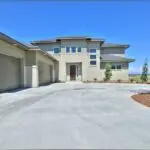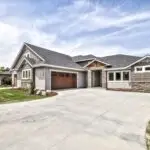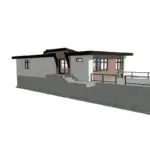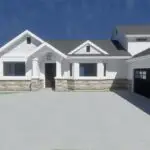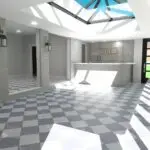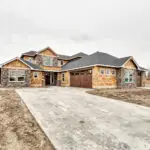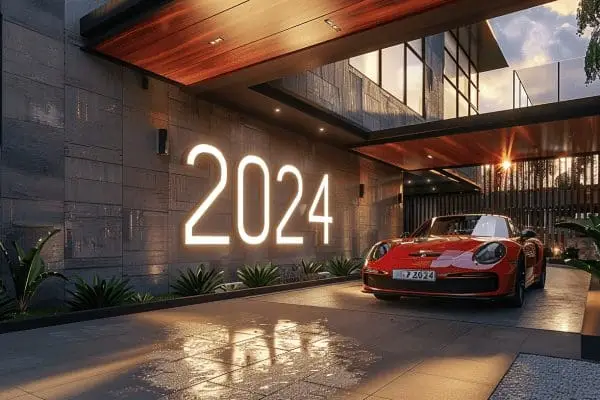Biophilic Design: A Look Into The Future Of Home Design
Biophilic Home Design: Bringing Nature Indoors
Imagine waking up in the morning to the soothing sound of flowing water, feeling the warmth of natural sunlight on your face, and breathing in the fresh scent of plants. This is the essence of biophilic home design, an approach to home design that aims to connect people with nature and improve their physical and mental well-being.
Inspiration: Blue Heron “Abrigo”
*Disclaimer: I am by no means advocating for you to consider building this size of a home. It is massive and it’s not the size that lights my fire. I do however suggest you consider designing your home so that you maximize the usefulness of every square foot in your home.
In this post we will cover the following topics;
I. Introduction
II. History of Biophilic Design
III. Benefits of Biophilic Home Design
IV. Elements of Biophilic Home Design
V. Incorporating Biophilic Design into Your Home
VI. Biophilic Design and the Homes of the Future
VII. Biophilic Design Trends
VIII. Conclusion
What is Biophilic Design?
Biophilic design is an approach to architecture and interior design that seeks to integrate natural elements, materials, and forms into the built environment. The goal is to create spaces that promote a sense of connection and harmony between people and nature, and that enhance our physical and emotional well-being.
The concept of biophilia, or the innate human connection to nature, has been studied extensively in fields such as psychology, biology, and ecology. Biophilic design seeks to tap into this connection by creating spaces that incorporate natural elements such as sunlight, plants, water, and natural materials like wood, stone, and clay.
History of Biophilic Design
The idea of biophilic design is not new. In fact, it has its roots in the earliest human settlements, where people lived in close proximity to nature and relied on its resources for survival. The modern concept of biophilic design, however, emerged as a design movement in the 1980s, led by figures such as biologist E.O. Wilson and architect Stephen Kellert.
Since then, biophilic design has become increasingly popular in contemporary architecture and interior design. It is seen as a way to create healthier and more sustainable living environments that promote human well-being and help to mitigate the negative impacts of urbanization and industrialization.
Benefits of Biophilic Home Design
The benefits of biophilic home design are numerous and well-documented. Here are just a few examples:
Improved physical health: Studies have shown that exposure to natural light, fresh air, and greenery can have a positive impact on our physical health. For example, natural light can help to regulate our sleep-wake cycles, while indoor plants can help to purify the air and reduce the risk of respiratory illness.
Improved mental health: Biophilic design has also been shown to have a positive impact on our mental health. Research has found that exposure to nature can reduce stress, anxiety, and depression, and improve cognitive function and creativity.
Increased productivity: By creating a more natural and stimulating environment, biophilic design can also improve productivity and performance. Studies have found that employees who work in spaces with natural elements like plants and sunlight are more productive and less likely to experience burnout.
Energy efficiency: Biophilic design can also help to reduce energy consumption and promote sustainability. By incorporating natural ventilation, daylighting, and passive solar design principles, homes can be designed to use less energy.
Sustainable design: Finally, biophilic design is an inherently sustainable approach to design, as it prioritizes the use of natural materials and resources, and emphasizes the importance of preserving the natural world for future generations.
Elements of Biophilic Home Design
There are several key elements of biophilic home design that can be incorporated into any living space:
Natural light: Maximizing natural light is an important aspect of biophilic design, as it helps to regulate our circadian rhythms and promote a sense of well-being. This can be achieved by incorporating large windows, skylights, and light wells into the design of a home.
Natural materials: Using natural materials like wood, stone, and clay can help to create a sense of warmth and connection with nature. These materials can be used in flooring, walls, furniture, and decor elements.
Plants and greenery: Incorporating plants and greenery into a home is a hallmark of biophilic design. This can be done by creating green walls, using potted plants, or incorporating natural materials like moss or branches into decor elements.
Water features: Water features like fountains, ponds, or even a small indoor waterfall can add a calming element to a home and create a soothing atmosphere.
Natural views: Access to natural views, whether it’s a backyard garden or a stunning landscape, can also help to connect people with nature and promote a sense of well-being.
Flexible spaces: Biophilic design often emphasizes the use of flexible spaces that can adapt to changing needs and allow for a greater connection with the outdoors. This can be achieved through the use of large windows that open up to patios or balconies, or even by incorporating outdoor living spaces like outdoor kitchens or dining areas.
Biophilic Design in Homes of the Future
As we look to the future, it’s clear that biophilic design will play an important role in the homes of tomorrow. With concerns about cleaner air and urbanization, there is a growing need to create sustainable and healthy living environments that prioritize our connection with nature.
In response, architects and designers are exploring new ways to integrate natural elements and materials into the built environment, from incorporating living walls and green roofs to creating homes that blend seamlessly into their natural surroundings.
Biophilic design is also being used to create homes that are more resilient in the face of natural disasters, such as floods or hurricanes. By designing homes that are more connected to their natural surroundings, these homes are better able to withstand extreme weather events and provide a sense of security and safety for their occupants.
Conclusion
Biophilic home design is a powerful approach to interior design that offers numerous benefits for our physical, mental, and emotional well-being. By incorporating natural elements, materials, and forms into our living spaces, we can create homes that promote a sense of connection with nature and enhance our quality of life.
As we look to the future, biophilic design will continue to play an important role in creating sustainable, healthy, and resilient living environments that prioritize our connection with the natural world.
Whether you’re building a new home or renovating an existing space, incorporating biophilic design principles can help you create a home that is not only beautiful but also supportive of your health and well-being.
From bringing in natural light and using natural materials to incorporating plants and flexible living spaces, there are many ways to incorporate biophilic design into your home. So why not give it a try and see how it can transform your living space and your life?
In summary, biophilic design is more than just a trend in home design; it’s a way of life that connects us with the natural world and enhances our physical and emotional well-being. By bringing nature into our homes, we can create spaces that are not only beautiful but also supportive of our health and happiness. So why not embrace biophilic design and create a home that nurtures your connection with nature and enhances your quality of life?
Resources On Biophilic Design
Books:
- “Journal of Biophilic Design – Issue 2: The Home” by Dr Vanessa Champion
- “Biophilic Design: The Theory, Science and Practice of Bringing Buildings to Life” by Stephen R. Kellert, Judith Heerwagen, and Martin Mador
- “Nature By Design: The Practice of Biophilic Design” by Stephen R. Kellert
- “Nature Inside: A biophilic design guide” by William D. Browning and Catherine O. Ryan
- “The Architecture of Happiness” by Alain de Botton.
- “Sustainable Home: Practical Projects, Tips and Advice for Maintaining a More Eco-Friendly Household” by Christine Liu.
Websites:
- 10 Biophilic Homes: https://www.dezeen.com/
- Biophilic Design Initiative: https://www.biophilicdesigninitiative.com/
- Terrapin Bright Green: https://www.terrapinbrightgreen.com/
- The Biophilic Cities Project: https://biophiliccities.org/
- The International Living Future Institute: https://living-future.org/
- The Green Building Council: https://www.usgbc.org/


